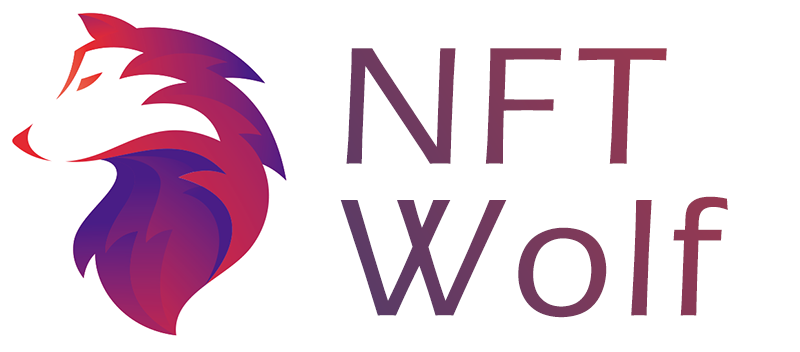As the NFT craze picks up, more and more digital artists are flocking to popular NFT trading platforms to try their hands at selling a meme, digital art piece, or trying their hands to sell a gif.
Amongst the contenders, two standouts are OpenSea and Foundation. By using blockchain technology, these platforms are cracking open the crypto world to create a sort of digital Christie’s.
But, which platform is better? Before you make your decision, keep reading to learn if OpenSea or Foundation is right for you.
What Is OpenSea?
OpenSea is a peer-to-peer marketplace for NFTs. It is the first peer-to-peer marketplace for the blockchain-based asset and has achieved critical success as a crypto art platform.

Since its inception in 2017, OpenSea has undergone tremendous growth. Perhaps a large part of its success is due to the platform’s sheer versatility. Not only can users buy and sell digital art, but collectibles, game items, domain names, digital representations of physical assets are also up for grabs.
Think of OpenSea as an NFT eBay with quite literally millions of assets. So, whether you’re looking to partake in the viral Cheeze Wizards or Japanese RPG MyCryptoHeroes, OpenSea is where you should go. Unsurprisingly, OpenSea holds the title of the largest general marketplace for user-owned digital items.
Like all NFT trading platforms, Co-founders Alex Atallah and Devin Finzer have created NFT platforms that reside on the Ethereum blockchain. But what separates OpenSea from others is that it’s powered by the Wyvern Protocol, a set of robust Ethereum smart contracts specific for digital asset transactions.
All in all, OpenSea is a phenomenal platform to host, sell, or buy digital assets.
What Is Foundation?
Foundation is another equally powerful NFT platform where you can trade, sell, and buy NFTs. Foundation has an exciting design as they pride themselves on fostering a community-driven environment with cutting-edge tools, design, and content.

The company launched recently – as in February 2021 – but has already made massive inroads in the NFT community. This is due mainly to their creatively robust team. Led by co-founder Matthew Vernon, the team has credentials working with Eyebeam, Google, Harvard, Kickstarter, New Museum, Phillips, Princeton, and The Broad.
The platform hosts live auctions for its digital assets, and Foundation features live bidding for prized assets, such as the famed Edward Snowden NFT.
Like all platforms, Foundation uses the Etherum public blockchain, which increases Foundation’s transparency and, as a result, its security.
All in all, Foundation is a simple and easy-to-use interface for collectors and artists alike who wish to participate in decentralized auctions for a wide variety of unique, collectible digital pieces.
OpenSea vs Foundation: Audience
Like all platforms, OpenSea and Foundation strive to tap into separate target audiences, and their ability to do this has further propelled their respective success.
OpenSea gears itself to a more adventurous audience as it trades a multitude of assets far surpassing digital art pieces, including game items, physical assets, domain names, and so forth.
In this sense, OpenSea is more of a hybrid – straddling all digital crypto assets that its users can think to sell – and buyers think to buy. Because of this, OpenSea attracts more crypto pioneers – those that push the boundaries of what it means to sell or buy digital assets.
Additionally, OpenSea is more inviting and welcoming than Fountain as Fountain is a semi-exclusive NFT marketplace. While anyone can set up an account with Fountain to purchase NFT, you must receive an invite to mint an NFT (minting means paying a transaction fee to get your piece validated and appear on the Ethereum blockchain).
How does one receive a coveted invite? Users need to have sold at least one NFT. Once you achieve this, you are eligible to receive an invite code from other Fountain creators. Fountain creators can only send invites to other users – so you need to make inroads with creators if you wish to receive an invitation.
As a result, Fountain fosters a more exclusive community with artists and digital creators with proven track records.
Of course, creating an exclusive community has its perks (once you’re in). For one thing, the audience has less competition and isn’t inundated with an excess of creations and pieces, as can happen with other platforms. Additionally, being in a community with other high-caliber artists attracts a more legitimate buyer audience.
OpenSea vs Foundation: Supported Currencies
Keeping with its current theme, OpenSea also supports a wide variety of currencies – over 200 payment options are available to OpenSea users. Because it exists on the Ethereum blockchain, ETH is the default currency, and if you pay with a different type of currency, OpenSea will convert ETH to wETH when making offers.
Users also have the option of adding customized ERC20 tokens to be used as alternate payment.
Fountain primarily uses ETH for all of its transactions. Every NFT can be purchased with ETH, and all creators are paid in ETH as well.
OpenSea vs. Foundation: Supported Wallets
To begin selling (or collecting) NFT on any platform, you need a wallet that can hold, receive, and spend cryptocurrency. You’ll also need a digital wallet to hold fees when you need to pay transaction or gas fees.
However, not all wallets are compatible with every NFT platform. That’s why it’s important to research which wallets are compatible with which platforms before you create an account with the marketplace of your choice.
OpenSea works with a wide variety of wallets. The most popular wallets are MetaMask or Coinbase. However, users can choose from a varied assortment, such as:
TrustWallet
TrustWallet is a mobile, non-custodial (meaning you have sole control over your private keys) that stores your digital key with an added security. This is an excellent option for those looking for a formidable security system.
Portis
Portis wallets are excellent for convenience since they connect to apps from nearly any web browser or device, like mobile phones.
Dapper
Dapper wallets are a great choice for users looking to save on fees since Dapper covers user gas fees. If you are looking to cut back on costs and plan to mint NFTs often, Dapper is a great way to save extra money.
Other popular choices that OpenSea accepts are:
- Fortmatic / Magic
- Arkane
- Authereum
- Bitski
- Kaikas
- OperaTouch
- Torus
- WalletLink
For Foundation, your options are extremely limited. You must use Meta Mask, which is a digital wallet specific to Ethereum. Even with other wallets available, Foundation only uses MetaMask. It’s connected to your web browser as an extension where you can hold and spend ETH. Don’t forget to connect your wallet to Foundation in order to participate in the marketplace.
OpenSea vs Foundation: Other Differences
Of course, the primary distinction that comes to mind when listing differences between OpenSea and Foundation is how exclusive Foundation is compared with OpenSea.
While OpenSea allows any creator to create an account, mint their NFT, and sell it on their marketplace, creators who wish to be a part of the Foundation community must first receive an invitation from a certified, successful Foundation artist.
Their choice trickles down to affect other aspects of each respective platform. Their audience is also different. OpenSea can sometimes suffer from an oversaturation problem due to its lack of barriers to begin minting on their site. While Foundation is harder
But OpenSea and Foundation have other differences besides the exclusivity (or the lack thereof) and the repercussions. Their minting fees are also very different. With OpenSea, you pay the price to mint once and then mint the rest for free. With Foundation, you pay fees for every minting and listing.
Like its creators, Foundation is a bit more specific: you have to use a specific wallet and currency, while OpenSea allows users to use a wide variety of digital wallets and currencies.
OpenSea vs Foundation: Conclusion
Both OpenSea and Foundation have their benefits and drawbacks. In a way, OpenSea fosters a new creative economy that expands beyond the parameters of what we know to be a digital currency. It’s also a great move if you are trying to sell your first NFT as they are as much less exclusive than Foundation.
On the other hand, if you’re a seasoned pro and can get your hands on an invitation, it may be worthwhile to sell your digital artwork on Foundation. You can enjoy less saturation in terms of creatives there.
Of course, there are other sites within that users can investigate, like SuperRare or Rarible. Whatever you choose, make sure you find the platform that’s right for you by considering the points outlined above.
So, what are you waiting for? Dive into the metaverse to test your hand out with selling your NFT art. You never know – maybe you’ll be on your way to becoming the next Beeple.

